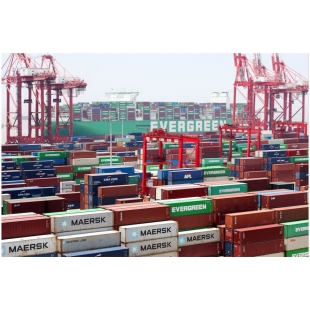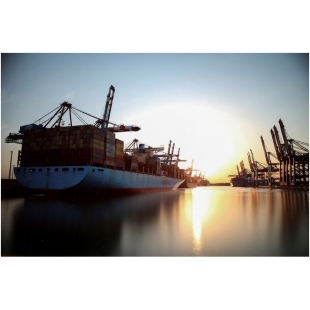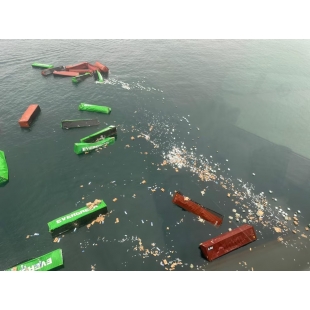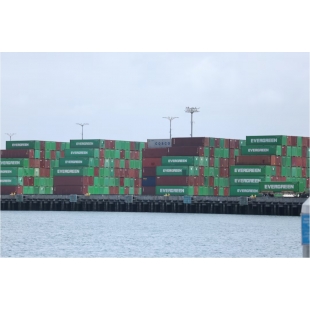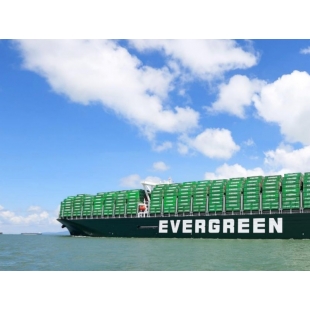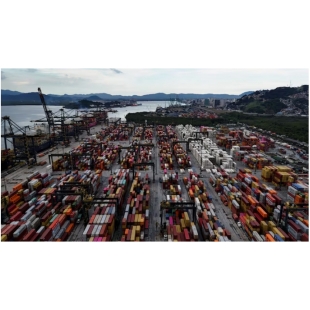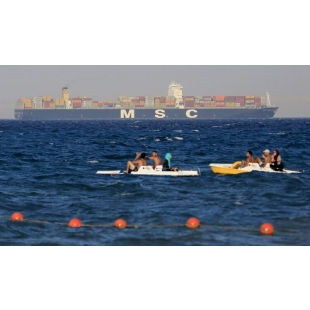Industry Information
-

Trump, Xi agree to pause dueling port fees that disrupted trade
1.U.S., China set one-year pause on port fees for each other's ships
2.Trump's port fees were aimed at rebuilding U.S. shipbuilding, maritime logistics
3.New fees caused scramble for non-China-linked ships, pushing up freight rates
4.Bessent says threat of US ports action cut demand for Chinese shipsTrump, Xi agree to pause dueling port fees that disrupted trademore -
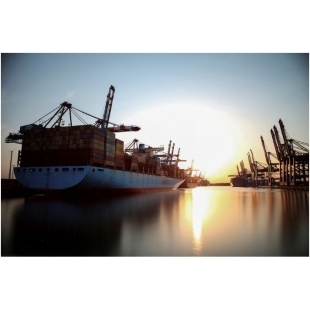
Tariffs and conflict causing major volatility in shipping industry, says UN trade agency
GENEVA, Sept 24 (Reuters) - The shipping industry is experiencing major volatility amid rising geopolitical tensions and disruptions caused by a wave of new tariffs, according to a report published on Wednesday by the U.N. Trade and Development agency.
Due to an increasingly complex and uncertain global trade environment, subdued industrial activity in major economies and weak Chinese demand for bulk commodities, UNCTAD has revised down its maritime trade growth forecast for 2025.Tariffs and conflict causing major volatility in shipping industry, says UN trade agencymore -
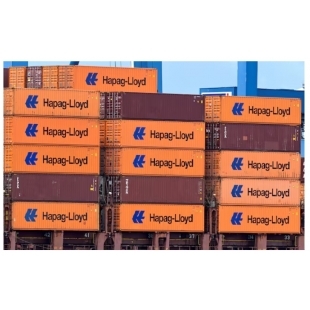
Hapag-Lloyd lowers 2025 earnings forecast, seeks savings
H1 profit slipped despite higher revenue, more boxes moved
Impact of Suez crisis, tariffs, Gemini venture hiked costs
Savings programme underway, of which Gemini to bring half
May improve revenue, but shipping costs are eating up gainsHapag-Lloyd lowers 2025 earnings forecast, seeks savingsmore -

Crew safe after Peru incident: Evergreen
CARGO LOSS: About 50 containers at the stern of the ‘Ever Lunar’ cargo ship went overboard, prompting the temporary closure of the port and disrupting operationsCrew safe after Peru incident: Evergreenmore -
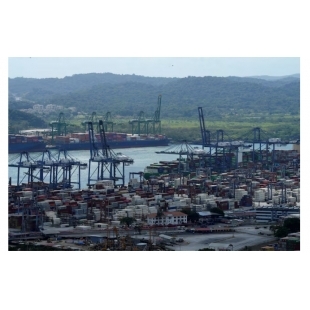
China stake in CK Hutchison port sale could ease Beijing pressure but US geopolitical risks remain
Summary
Deal underscores China-US battle for global maritime influence
China pushing state shipping giant COSCO as investor, sources
U.S. likely to oppose COSCO's involvement, analyst
Regulatory approval could take years, analystsChina stake in CK Hutchison port sale could ease Beijing pressure but US geopolitical risks remainmore -
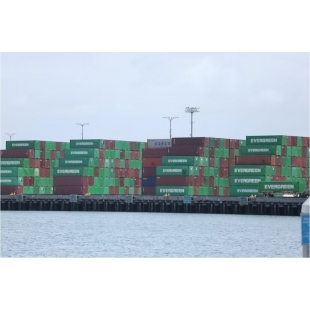
Tariff-fueled surge in container shipping rates shows signs of peaking
Summary: Container spot rates, especially on the Asia–U.S. West Coast route, surged into early June—Shanghai Containerized Freight Index (SCFI) peaked near $6,000/FEU, up from the typical $5,000–$5,500 range. However, analysts suggest this may be the peak: Drewry forecasts cooling as cargo volumes front‑loaded ahead of U.S. tariff deadlines begin clearing, and capacity increases from carriers weigh on ratesTariff-fueled surge in container shipping rates shows signs of peakingmore -

US line booking surges, freight rates rise; Evergreen is cautiously optimistic about Q3 peak season
Evergreen Marine (2603) held a shareholders meeting today (29). The company said that after the US and China reached a 90-day tariff agreement, US line booking demand surged, driving up spot market freight rates. It is expected that space and cargo volume will return to previous levels by the end of June. Although Q3 is the traditional peak season, the market is still full of uncertainty. It will continue to strengthen operational resilience and competitiveness and flexibly respond to changes.US line booking surges, freight rates rise; Evergreen is cautiously optimistic about Q3 peak seasonmore -

WTO:Container trade uncertainty: Global trade volume will decline this year
The World Trade Organization (WTO) has issued a warning that container trade is experiencing capacity restructuring and market uncertainty, and global trade volume will decline this year (2025).WTO:Container trade uncertainty: Global trade volume will decline this yearmore -

What would a US-China trade war do to the world economy?
A full-scale trade war between China and the US is in prospect after President Donald Trump imposed 125% tariffs on Chinese goods imports.
China has retaliated by hiking its tariffs - or taxes - on goods imported from America to 125%.
What does this escalating trade conflict mean for the world economy?What would a US-China trade war do to the world economy?more -

UN shipping agency strikes deal on fuel emissions, CO2 fees
The International Maritime Organization (IMO) reached a landmark agreement on a global emissions standard for the shipping industry. Starting in 2028, ships emitting CO₂ above set thresholds will face significant fees: $380 /ton for exceeding the main limit, plus an extra $100 /ton for breaching stricter standards. Emission targets include an 8% reduction by 2030 and 30% by 2035 (stricter targets are 21% by 2030 and 43% by 2035). Credit trading between under‑ and over‑performing vessels is allowed. Despite some opposition—from the U.S. and emerging economies—a majority supported the plan, expected to generate up to $40 billion in fees aiding the shift to zero‑emission fuels.UN shipping agency strikes deal on fuel emissions, CO2 feesmore -

Baltimore bridge salvage: 'This is a game of Jenga you don't want to lose'
Bernd Debusmann Jr
BBC News, Baltimore
US Army Colonel Estee Pinchasin looks out at the thousands of tonnes of twisted, broken steel and concrete jutting out from the dark waters of Maryland's Patapsco river, and delivers her assessment: an "unforgiving mangled mess".
"That's the best way to describe this," the fatigue-clad veteran says from the deck of an Army-operated salvage vessel, the Reynolds. "It's hard to explain steel that is cantilevered, bent and smashed with so much force."
The "mess" Col Pinchasin has been tasked with clearing is the tattered remnants of Baltimore's Francis Scott Key Bridge, strewn around - and embedded into - the Dali, a massive 948ft (289m) cargo ship that now sits motionless under an expanse of shredded metal, with partially crushed shipping containers hanging from its sides.
The mangled mess is self-explanatory. But why unforgiving? Because, put simply, anything and everything here is a potential threat to the lives of salvage crews.
The Dali's collision with the bridge in the early hours of 26 March brought the structure down in a matter of seconds, leaving six workers dead and the ship stuck. This has prompted a huge response that has included the US Army Corps of Engineers, Navy, Coast Guard, Maryland authorities and specialist private firms.
The effort aims to unblock the 700ft (213m) wide and 50ft (15m) deep shipping channel, re-float and remove the Dali and clear whatever remains of the estimated 3,000 to 4,000 tonnes of debris from the wider Patapsco.
"Those things are happening simultaneously," Col Pinchasin, the Army Corps of Engineers Baltimore district commander, told the BBC. "But the priority is for the channel, because we need to get those people back to work and help all the businesses that are affected."
The port is one of the busiest on the East Coast of the United States and a key regional hub for goods including steel, aluminium and agricultural equipment. It is used by car-makers including General Motors and Honda. As many as 15,000 jobs depend on it, including 8,000 directly employed there.
The mission has turned the area into a hub of activity, buzzing with small US Navy sonar vessels and police boats, workers testing spark-emitting hydraulic shears, and - so far - seven huge crane barges, including the Chesapeake, a 1,000-tonne capacity crane once used by the CIA to build a ship used to recover a Soviet submarine from the bottom of the Pacific.
Piece by piece, debris will eventually be disassembled and lifted onto barges to be taken away.
"With every layer of debris they remove, they have to go back in and survey the wreckage to see if it reacted the way we thought it was going to," Col Pinchasin said. "Are there any instabilities? Are they things we missed? What did we not see?"
"They need to have discipline and be very self-critical."
The dangerous work of making these determinations has so far fallen on teams of divers who inspect both the ship and the vast, unseen debris field beneath the surface.
They are often unable to see more than a foot or two in the muddy brown waters of the Patapsco, forcing them to be guided by operators in nearby surface vessels.
Their assessments, Col Pinchasin said, are essential to ensuring that larger pieces of debris can be dismantled and removed safely.
Lost power, mayday call and crash before Baltimore bridge collapse
What will happen to the 21 sailors stranded on the Dali?
"The pieces might be mangled, but there's a lot of force pent-up in how they're sitting right now," she said, gesturing at a large chunk of metal protruding from the shipping channel.
"If you were to cut one of those things, and there's tension there you don't know about and it snaps, people can be in a lot of danger," she added. "We need to know what's connected, and that's why the divers have to go in. They have to feel and reach to verify… but it's like they have their eyes closed."
A separate team of divers, drawn from the ranks of the Maryland State Police, stands ready to dive if and when investigators believe they have found the remains of the three men still missing from the collapse.
The continued search for those men, she added, continues to weigh heavily on the minds of those involved in the salvage operation.
"These are families that did not get to celebrate Easter together," she said. "This is very solemn ground."
Those involved in the operation and maritime experts say that the scope of the operation has few, if any comparisons.
An initial $60m (£47.4m) in emergency funds have been earmarked to cover the work. The true cost may be much higher, with one politician, Maryland Democrat David Trone, telling CBS that the cost could eventually rise to $1bn.
"The scale is the biggest challenge, but also the complexity," said Captain Dan Hoban, a British Royal Engineer who was on a routine exchange with the US Army Corps of Engineers when the bridge collapsed.
"It's a really messy situation. From an engineering perspective, we are trying to figure out where the cuts are going to be made and then incorporate that into a lifting plan," added Capt Hoban, who has been helping with the mission.
"But it needs to be safe for all those operating out there," he added. "Everyone wants to get going quickly, but trying to do so safely and efficiently. We don't want to create a more difficult situation. That's the key."
Peter Ford, a long time merchant mariner whose firm SkyRock Advisors specialises in infrastructure projects, said that the "intricacies" of the Baltimore operation made it considerably more hazardous than other complex operations, such as that which freed the Ever Given, after it got stuck in the Suez Canal in 2021.
"This is beyond anything we've seen," he said. "It's all going to be hard. It's the mixture of the infrastructure above and below water and the fact that debris is literally draped over and balancing on the vessel."
Once salvage crews begin cutting larger pieces of the debris, Mr Ford predicts that the constant shifting and movement of the debris and the vessel alike can become a potentially dangerous challenge.
"God forbid that somebody miscalculates and this very sharp steel ends up cutting into a part of the ship where the bunker fuel is, or some sort of hazardous commodities on the vessel are breached and leaked into the ocean," he said.
"This is a game of Jenga you don't want to lose."
Getty Images
Workers plan to use specialised cutting tools and hydraulic shears to remove parts of the Key Bridge
For now, the salvage operation is still in its early stages and is largely focused on assessing the scene and the bridge, removing smaller pieces and have so far opened smaller temporary shipping channels to allow limited maritime traffic to pass through the area.
By the end of April, the Army Corps of Engineers plans to open a limited access channel 280ft (80m) wide and 35ft (10m) deep to allow one-way traffic for barge containers and some roll-on-roll-off vessels that carry cars and equipment.
The entire, permanent channel is expected to be clear and ready for use by the end of May, the "unified command" responsible for the operation said in a statement on 4 April.
That target date, however, may change because of the weather or unforeseen problems with the clearance operations.
"We have to go slow to go fast. Slow is smooth. Smooth is fast," she said. "This is a long haul."
Baltimore bridge salvage: 'This is a game of Jenga you don't want to lose' (bbc.com)
Baltimore bridge salvage: 'This is a game of Jenga you don't want to lose'more -

DFS warning as Red Sea disruption hits deliveries
12 June 2024
Share
Charlotte Edwards
BBC Business reporter
Reuters
DFS Furniture has issued a profit warning after shipping disruption in the Red Sea and weak demand from customers.
The disruption to shipping has delayed between £12m to £14m worth of deliveries, the group said in its latest update to investors.
It means those deliveries will be pushed into the next financial year, denting this year's profits.
Cargo ships are having to take lengthy and expensive detours to avoid the Suez Canal trade route amid attacks by Houthi rebels.
The Houthis, an Iranian-backed rebel group, considers Israel an enemy and has been attacking shipping on one of the world's most popular trade routes in response to the war in Gaza.
The Houthi group has declared its support for Hamas and has said it is targeting ships travelling to Israel, though it is not clear if all the ships that have been attacked have actually been heading to Israel.
But because of the attacks and the threat, several container shipping companies have since diverted vessels to a much longer route around Africa's Cape of Good Hope and then up the west side of the continent, leading to shipping delays.
Who are the Houthis and why are they attacking Red Sea ships?
DFS Furniture sales are now expected to be £995m to £1bn in the year to 30 June.
The brand previously slashed its guidance figures in March and predicted revenues to fall somewhere between £1bn and £1.02bn.
"Consumer demand in the upholstery sector has remained challenging and Red Sea routing issues have persisted resulting in delays to customer deliveries and higher freight costs," DFS said on Wednesday.
It added that, despite higher shipping costs, it has still managed to reduced its operating costs by about £25m year-on-year.
The company said that it does expect consumer demand to improve as the rate of price rises slow and people may be able to benefit from any potential cuts to the interest rate by the Bank of England.
DFS customers can track their orders on the company's website.
The furniture specialist recommends keeping your old furniture until a delivery date for your new order has been confirmed.
DFS warning as Red Sea disruption hits deliveries (bbc.com)DFS warning as Red Sea disruption hits deliveriesmore

